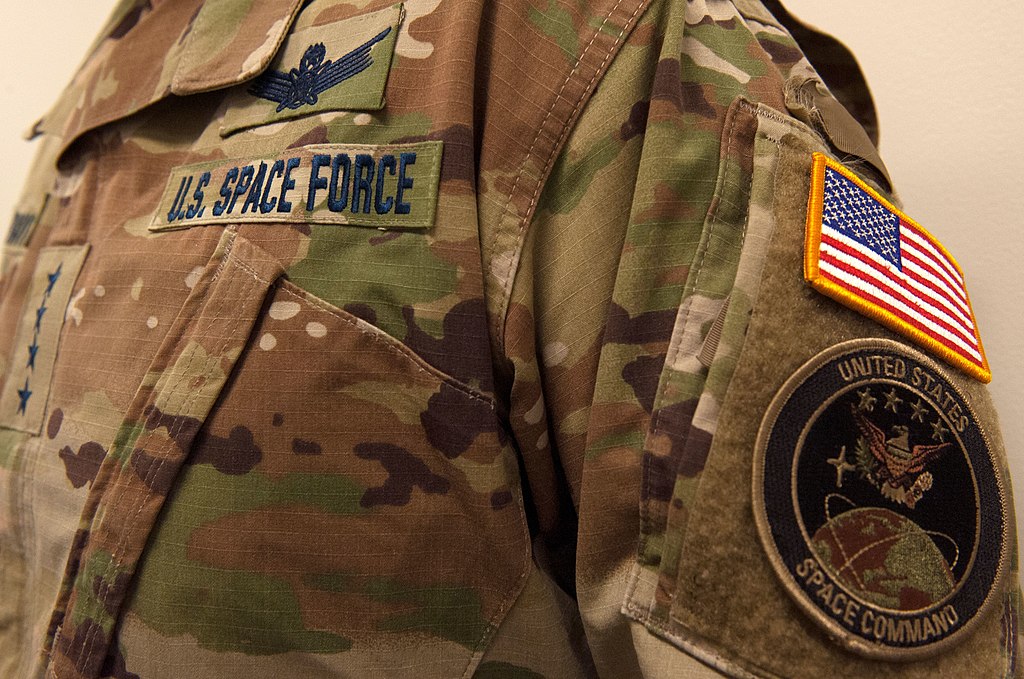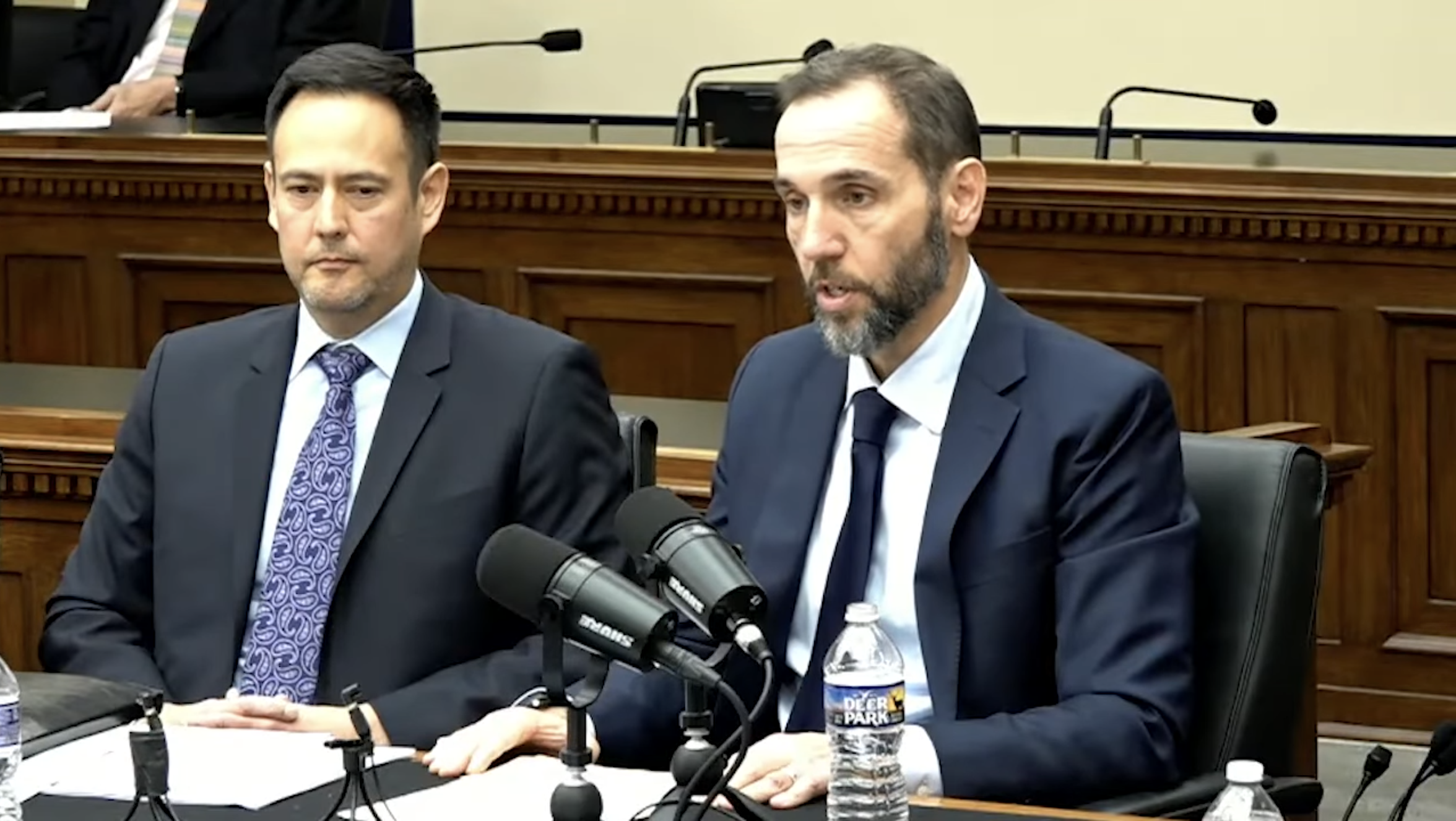The Reviews Be Damned: ‘Space Force’ Is Awesome
The new Netflix comedy is a different kind of military television show, and an interesting model for how art can begin to sort through the Trump presidency.

The reviews were nearly unanimous. The Verge called it “[a]stonishingly bad” and “astonishingly unfunny.”
Vulture said it was a “massive misfire.” Wordplay rocketed around reviews like “failure to launch,” “never achieves liftoff,” “fails to reach orbit” and “crashes and burns.”
The one notable exception was the review from Task & Purpose, a military and veteran-centered online publication, which called the show “a biting satire of the defense industry.”
Count me with Task & Purpose. Everyone else is wrong: The new Netflix comedy “Space Force” is awesome.
What separates the military geeks from everyone else? It seems that most reviewers were expecting a quirky, deadpan comedy on the level of the American version of “The Office.” After all, the show is produced by Greg Daniels, creator of “The Office,” and its star, Steve Carell. Or reviewers thought they were going to watch some kind of venomous parody of the Trump administration.
In fact, the show is, as Task & Purpose observed, an incisive satire of the Department of Defense; the military; and, to quote Lawfare executive editor and fellow “Space Force” defender Susan Hennessey, “the everyday petty bullshit” that infuses the lives of those bound to the military-industrial complex. And while Trump is never named specifically, “Space Force” is heavily inflected by the particular challenges of dealing with a Twitter-happy egomaniac as commander in chief who, to put it mildly, has no idea how any part of the military actually works.
I realized the particular hilarity of “Space Force” for those who are intimately familiar with the military when, in the first episode, a Space Force biologist must collect all endangered lizards within 600 yards of a rocket launch site. Upon seeing this scene, the Marine Corps infantry officer with whom I was watching the episode burst out laughing, grabbed the remote and announced we were watching the scene again. I suspect most of the show’s reviewers did not need to rewind that scene to marvel at its absurd perfection. That’s because most reviewers probably didn’t serve at Marine Corps Air Ground Combat Center Twentynine Palms in California, where an endangered desert tortoise spotting overrides all other mission imperatives.
There’s also the moment in the first episode when Space Force’s Army liaison and the show’s protagonist Chief of Space Operations Gen. Mark Naird try desperately to find something to show off to a visiting congressional delegation. When a test missile explodes rather than launches, Naird asks, “How much was the rocket?”
“Four,” says the liaison.
“Million?”
“No, middle schools. Costs as much as four new middle schools.”
Naird’s one-word, four-letter response is the cry of many who work in the military or in the national security apparatus when they realize just how much their day’s activities cost American taxpayers.
The series follows Naird, whose professional ambition to take over the Air Force is thwarted when he is instead tasked with leading the newly created branch of the military. Space Force—created by presidential tweet, of course—is supposed to put “boots on the moon” by 2024. Off Naird goes to Wild Horse, Colorado, to deal with frustrated scientists, scamming entrepreneurs, angry politicians, nosy Russian military observers, the perils of social media and great power competition—all while trying to keep his family together. The work is frequently and (often) hilariously complicated by the unnamed president’s tweets, affection for Russia, impulsivity, megalomania and utter disregard for the laws of war .
Naird’s desperate attempts to maintain military normalcy are thwarted time and again by the whims of the commander in chief. The first lady custom-designs new uniforms that are not just ugly but impractical and borderline lethal. The president insists that Space Force use rocket fuel invented by a Silicon Valley mogul (a loose mashup parody of Elon Musk and Elizabeth Holmes), which turns out not to work. The secretary of defense, to the horror of the Joint Chiefs, demands that Naird flout the Geneva Conventions, saying: “I’m not a professional politician, but this European international treaty? Come on! Don’t get captured like a bunch of losers and you don’t have to worry about how they treat ya.”
Military movies and television shows play an important role in depicting for the public the horrific realities of war. “Space Force” displays a different side of military service: the everyday sacrifices and bureaucratic absurdities that pervade the lives of those connected to the Department of Defense. “Space Force” shows affection for military life, even as it is unsparing in skewering some of its darker aspects. Naird fields calls from his aging, dementia-declining parents, whom he can’t care for properly because of the demands of his job—he also can’t spend more than 40 seconds with his spiraling teenage daughter (she times it). A leading Space Force scientist is relentlessly subjected to suspicion and casual racism because his family is from Hong Kong. The female chief of naval operations must, despite her rank, constantly navigate sexism. And Space Force’s head civilian scientist, played by the flawless John Malkovich, feels immense isolation as an older, gay man on a military base in the middle of rural Colorado. Malkovich’s character is also a stand-in for the audience. He voices the political frustration from which the uniformed characters restrain themselves and fights to keep space a place of human exploration and science as the military and national security apparatus subsumes it into the machine of war and great power competition. It's a small wonder that so many of the reviews saw Malkovich as the highlight of an otherwise dull show—he’s been dropped into the military-industrial complex after a lifetime in the outside world, just like many of the viewers and critics.
The show has off-notes. It offers a lazy imitation of Rep. Alexandria Ocasio-Cortez that lacks the nuanced treatment of other characters. Even the show’s stand-in for Speaker of the House Nancy Pelosi (called Rep. Pitosi in the show) is a sendup of Washington’s female aristocracy—Pelosi, combined with elements of Dianne Feinstein, Barbara Boxer and some Jane Harman for good measure. Likewise, the writing for Naird’s teenage daughter falls a little flat; it is Naird’s relationship not with his family but, rather, with Malkovich’s character that is the compelling emotional center for the series.
That said—and at the risk of losing credibility as a judge of comedy—the show is delightful. The review aggregator Rotten Tomatoes blamed the show’s “uneven blend of earnestness and satire” for its poor reception. But that blend is the essence of public service: It’s everyday frustrations, slinging bullshit, putting up with pettiness, fighting against shades of incompetence from the vaguely comedic to the profound to the occasionally tragic that define careers in government. The show’s sincerity captures the desire to do good and a belief that what you do might, in some small way, make something better, as well as the basic impossibility of public service under the current political conditions. That is what “Space Force” gets so right about the Trump era. Rather than attempting to parody a president who is truly beyond parody, it treats him as a black hole at the center. Trump is the vortex around which good-yet-flawed characters must navigate, a force that interrupts the coping mechanisms for long-standing pathologies within the military-industrial complex and then makes everything a million times worse. In that, it’s a model for how art can begin to sort through the chaos we’ve experienced for the past four years.
I, for one, am looking forward to a second season.





